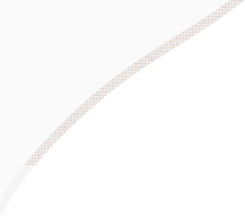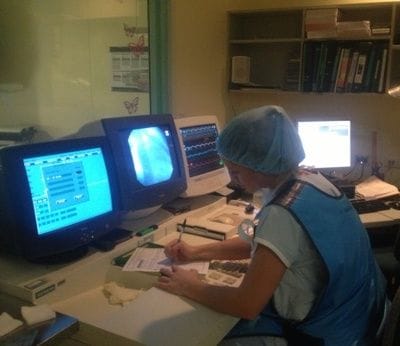
RECENT NEWS & EVENTS
Lunch in the Heart of Sydney
Rising Star Award
Team Harley - City2Surf 2017
Cardiac Catheterisation
 What is Cardiac Catheterisation?
What is Cardiac Catheterisation?
Cardiac Catheterisation is a test, sometimes carried out to obtain detailed information about the heart. Often this information cannot be obtained by other simpler tests, such as echocardiography. Cardiac Catheterisation can also be used to treat some heart abnormalities such as blocked valves or arteries. This is called an interventional catheterisation.
How is this procedure performed?
The catheter is a fine, hollow, flexible tube, which is usually introduced into the artery and/or vein on either or both sides of the groin. Sometimes other entry sites are used, such as the arm or neck veins. The catheters are introduced through one to two millimetre needle holes.
The catheter is guided by the doctor carrying out the procedure, using sophisticated x-ray equipment. The end of the catheter is passed into the heart chambers and main arteries and veins. Blood pressure measurements and oxygen levels are measured at these points to help determine heart function.
A special fluid, containing iodine, is injected via the catheter to outline the heart chambers and blood vessels more clearly. This is called an angiogram. This is recorded on special equipment and retained on a CD. This information can be critical when deciding how best to treat abnormalities of the heart.
In some cases, special catheters with sausage shapedballoons attached, can be used to enlarge narrowings. Sometimes various plugs or coils are introduced through the catheters to close off abnormal connections between blood vessels or holes in the partition between the heart chambers. Most abnormalities, however, will still need surgery to be repaired.
Risks
Cardiac Catheterisation is a test or special treatment which is carried out in a sterile area, like an operating theatre. Often it is performed under general anaesthetic for safety reasons.
The test is generally quite safe, but like with any procedure that involves entry into the body, there is a chance of serious complications. These will vary
according to what exactly is required during the procedure. You should discuss possible complications with the cardiologist or cardiology fellow carrying out the procedure. The risks associated with this procedure are far outweighed by the benefit it provides in diagnosing and treating your child's heart condition.
Hospital admission
Your child will be admitted to hospital the day before the procedure, or sometimes on the morning of the procedure. On admission to the Hospital ward they will be examined by the resident doctor, the cardiology fellow (who will perform part of the procedure with the cardiologist), the anaesthetist, and a nurse. A blood test may be necessary if the procedure is done to stretch a heart valve, to dilate blood vessels, to close a hole, or if the procedure is being done on a small baby.
Your child will not be allowed to eat or drink anything for about six hours before the procedure. Sometimes a sedative is ordered by the anaesthetist to be given about half an hour before the procedure The test usually takes one and a half to two hours and is done in the Cardiac Catheter Laboratory, which is in the Medical Imaging Department.
On the day of the procedure
You can accompany your child to the anaesthetic room of the Catheter Unit and wait until they are asleep. You will then be asked to wait either near the Cardiac Catheter laboratory or the waiting room of the Recovery Ward, where your child will return for close observation for about one hour after the test before going back to the ward.
After the procedure and until discharge, the nurses will carry out regular monitoring of your child's temperature, blood pressure, respiratory rate, heart rate, the groin wound and their foot pulses.
Children often feel sleepy or a bit restless for a few hours after catheterisation. Some older children also experience vomiting. Small sips of water are given initially and increased as tolerated and a normal diet is resumed later that day
Results
Your cardiologist will talk to you after the procedure and briefly explain how the procedure went. The detailed examination of the information will then be made by the cardiologist in the days or weeks after the procedure. Sometimes this information also needs to be discussed with other members of the team, such as the other
cardiologists or the surgeons. An arrangement for further contact or follow-up is made prior to leaving hospital.
Discharge
If all observations are satisfactory and fluids and diet are tolerated, children are often discharged home in the afternoon after the procedure. After interventional catheterisations, the child is often kept in hospital until the next day.
The groin wound is usually covered with steri-strips, which should be removed after one day. Sometimes there are a few stitches that should be taken out after three to five days by your local doctor. Your child should be able to go back to school after two days, but should not participate in any strenuous activities for two weeks. On discharge from the hospital you should be given information of how to look after your child at home after cardiac catheterisation, and what to do if there are any problems.
In the two to four weeks after the procedure, if your child is unwell, especially with fever, there is a small possibility this is related to the catheterisation. Unless there is a very clear explanation for the illness such as an obvious runny nose, it may be better to avoid antibiotics. After seeing your local doctor, also contact the Cardiology Service or your cardiologist for advice. Usually it will be just a childhood illness that can be managed by your family doctor, so don't panic.
Heart Beads
 Heart Beads is a programme that was started at the Heart Centre for Children in 2008.
Heart Beads is a programme that was started at the Heart Centre for Children in 2008.
The beads are a great way to trace your child's hospital journey. They provide a tool for children and families to be able to talk about the illness and experience, and to reward your child for their courage.
If you have questions about this programme, please don't hesitate to call our Preadmission Nurse via our reception on (02) 9845 2345.





